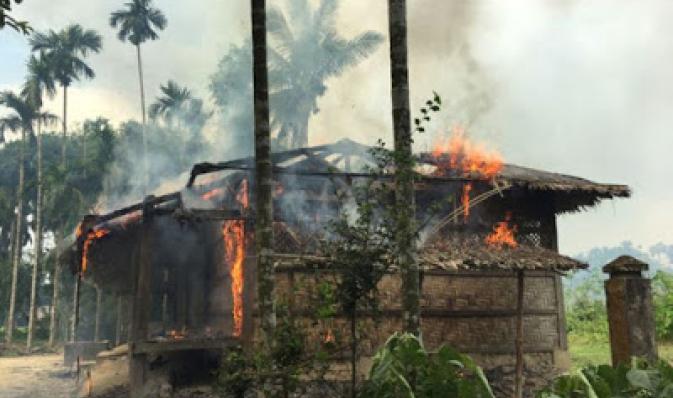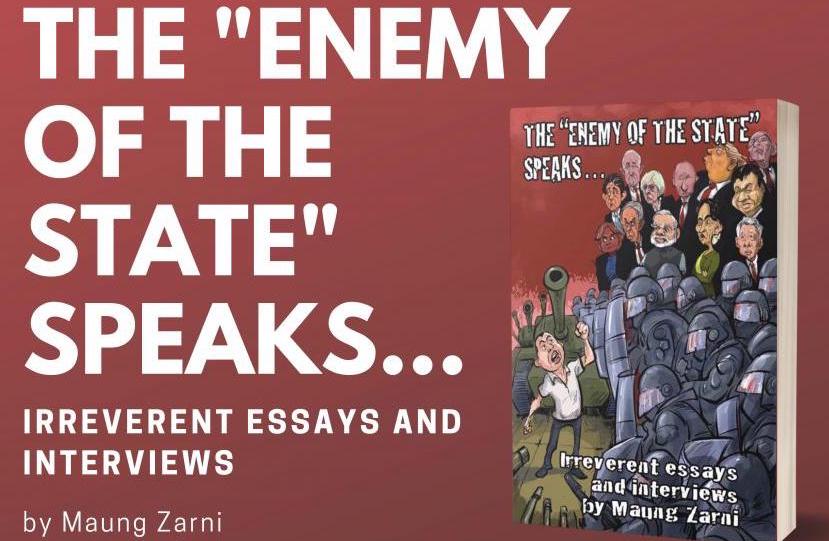
VOA's Kane Farabaugh visited Fort Wayne, Indiana, one of the largest Burmese communities in America, where more than 150 Rohingya families have resettled in recent years.
He reports that the tensions between the groups continue even in their new home.
FORT WAYNE, INDIANA — As she fastens her hijab while standing in the doorway of her modestly equipped apartment, Rohingya refugee Bibiasha Mohamad Tahir’s thoughts drift between the present, watching her infant daughter safely playing on the floor of this sunlit living room in Fort Wayne, Indiana, and the past, the haunting images of death and destruction in her home village in the Rakhine state of Myanmar.
“They shot and killed people,” she told VOA through a translator who understands her Bengali dialect.
“They burnt down everything ... we had [no] place to stay. They laid down broken glass, wires on the roads. They held people at gunpoint.” Denied the ability to freely travel, unable to attend school or work, and not considered citizens of the country they were living in, the increasing violence reinforced to Tahir and her family that staying in Myanmar no longer was an option.
“We’ve lived there for years, for generations. Our grandparents lived there. Now, they cannot live there in peace. They’re setting villages on fire, everything on fire. They’re killing people. They are burning down everything.
There is no peace,” she said. Fleeing to the U.S. So Tahir, her husband and children fled Myanmar, arriving in Malaysia before eventually reaching the United States in 2014.
More than 500,000 Muslim Rohingya like her have fled Myanmar in the wake of a brutal military crackdown that a top United Nations human rights official calls “ethnic cleansing.” It has fueled a humanitarian crisis as hundreds of thousands of Rohingya seek refuge in camps in neighboring Bangladesh, while waiting to be resettled in another country.
The crisis has increased the number of Rohingya refugees arriving in the United States, and since 2015 they outpace the number of Syrians resettling here. But instead of landing in Chicago or Milwaukee, two cities home to a large number of Rohingya, Tahir and her family instead arrived in Fort Wayne, Indiana, and became one of the first Rohingya families in the area.
A Burmese community Burmese community members believe there are now more than 150 Rohingya families living in Fort Wayne, and although their numbers are growing, their community remains a small fraction of the more than 6,000 Burmese of various ethnic groups now living in the city.
Most of the foreign-born Burmese population in Fort Wayne speak a different language and practice different religions than the Rohingya, and the ethnic tensions and religious persecution that fueled their flight from Myanmar don’t necessarily end once they arrive here.
“Why I don’t like Rohingya to come to Fort Wayne is … most of them, almost 100 percent, are Muslims,” said Burmese Chin community leader Abraham Thang, who moved to Fort Wayne in the 1990s. “They’re blood is Muslims, not Buddhist, not Christians. They did very terrible job, like attacking the military and police post, and killing and murdering the Hindus.
That is not good for Rohingyas. That is the big mistake by Rohingyas.” Thang, a pastor at the Myanmar Indigenous Christian Church, was one of the few Burmese willing to talk to VOA about Rohingya resettlement in Fort Wayne, and while he emphasizes these views are his own opinions, they are indicative of the same resentments Rohingya face in Myanmar.
“I don’t mind they practice what they believe,” Thang explained to VOA. “What I mind is extremism. Most of the terrorists come from the Muslim community. This is what I am thinking in my mind personally. So my opinion is, rather than sending Rohingya to Fort Wayne, and not sending them here is better don’t send Rohingya to Fort Wayne.” Mayor: All welcome here “That’s unfortunate,” said Fort Wayne’s mayor, Tom Henry.
“I want anybody from Myanmar to know they are welcome in our community.” Henry, a Democrat, has made Burmese integration into life in this city of more than 250,000 a priority of his administration.
“We try to pride ourselves in being a welcoming community, an inclusive community, a community that allows people to assimilate throughout our community and if they want to ultimately become an American citizen, we’ve got the tools in place to help that happen. So when I hear that there is that kind of tension and anxiety behind the scenes, that disturbs me.” But some community members, like Thang, worry that an increasing number of new arrivals will only fuel tensions. “I foresee the Burmese people and the Rohingya people in the future, sooner or later, we will have conflict and that is not good for the Fort Wayne community.”
The mayor disagrees. “I don’t see that happening,” Henry said. “We have a very safe community.” Rohingya feel welcomed The Rohingya refugees in Fort Wayne who agreed to speak to VOA all have indicated they do not believe they have been marginalized or persecuted by other Burmese in the area.
None have experienced any open hostility to their arrival, and they say so far, they have been welcomed and assisted in their resettlement. Although she now feels safer, Bibiasha Mohamad Tahir is still adjusting to her new life in America, and wonders when she’ll finally feel “settled.” “We couldn’t find peace in our own country ... how could we find peace here?”
While peace might remain elusive, she soon may find comfort among an increasing number of familiar faces as more than 500,000 Rohingya search for new homes, and new lives away from the violence that continues to plague Myanmar.









